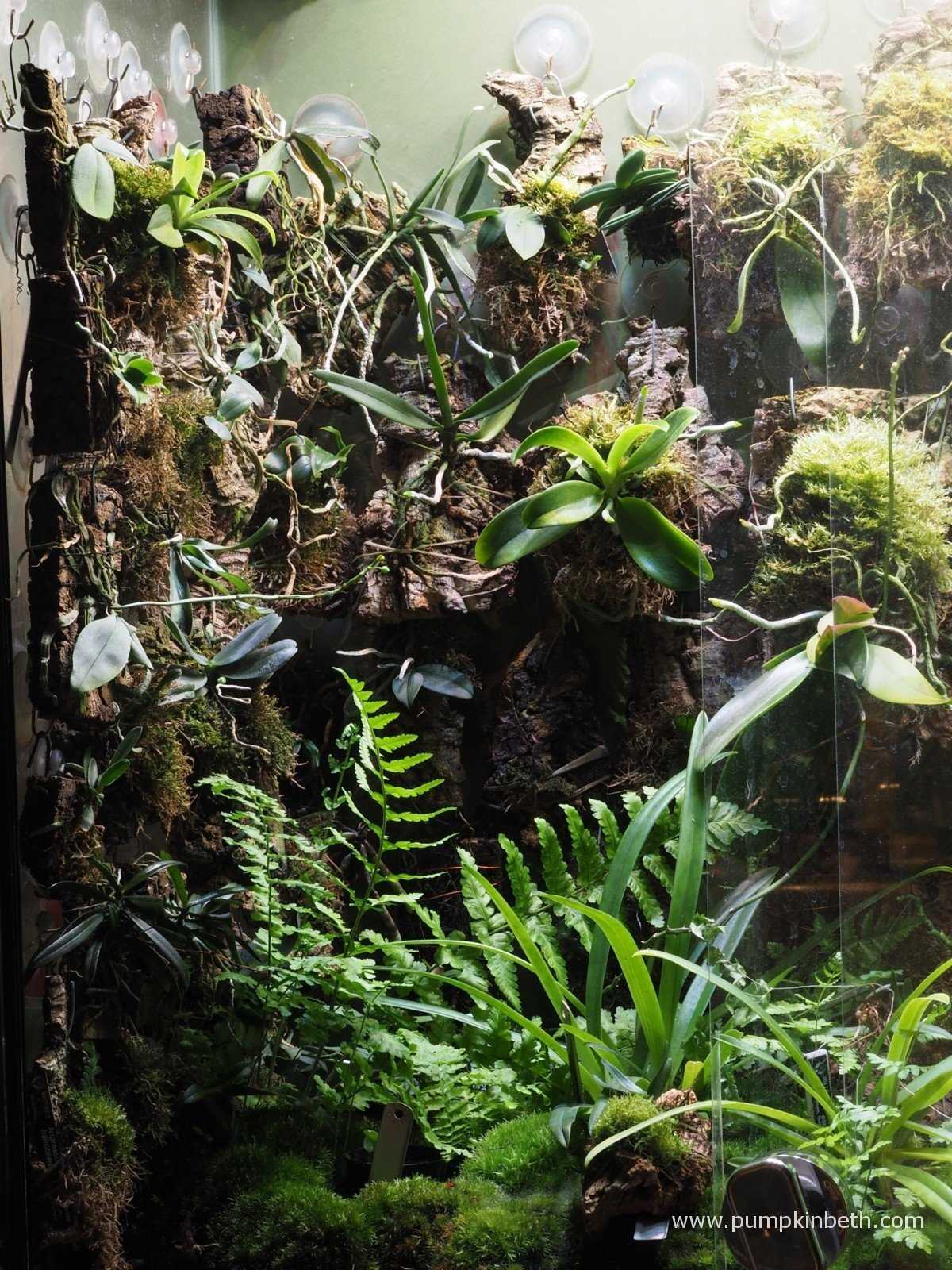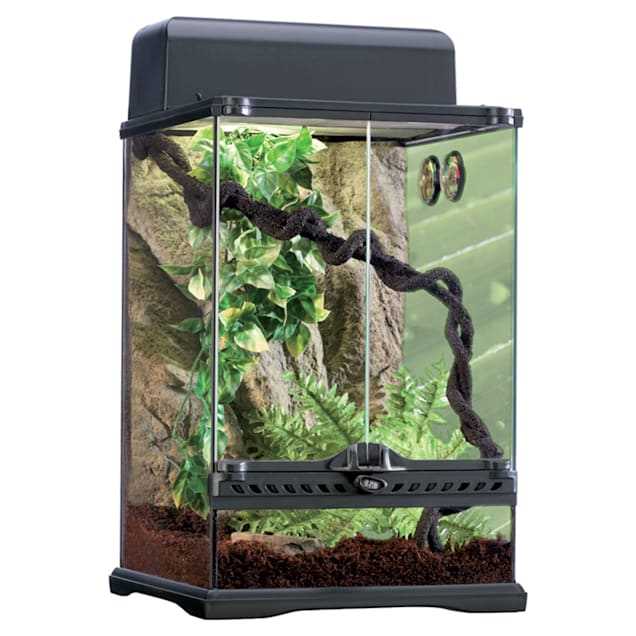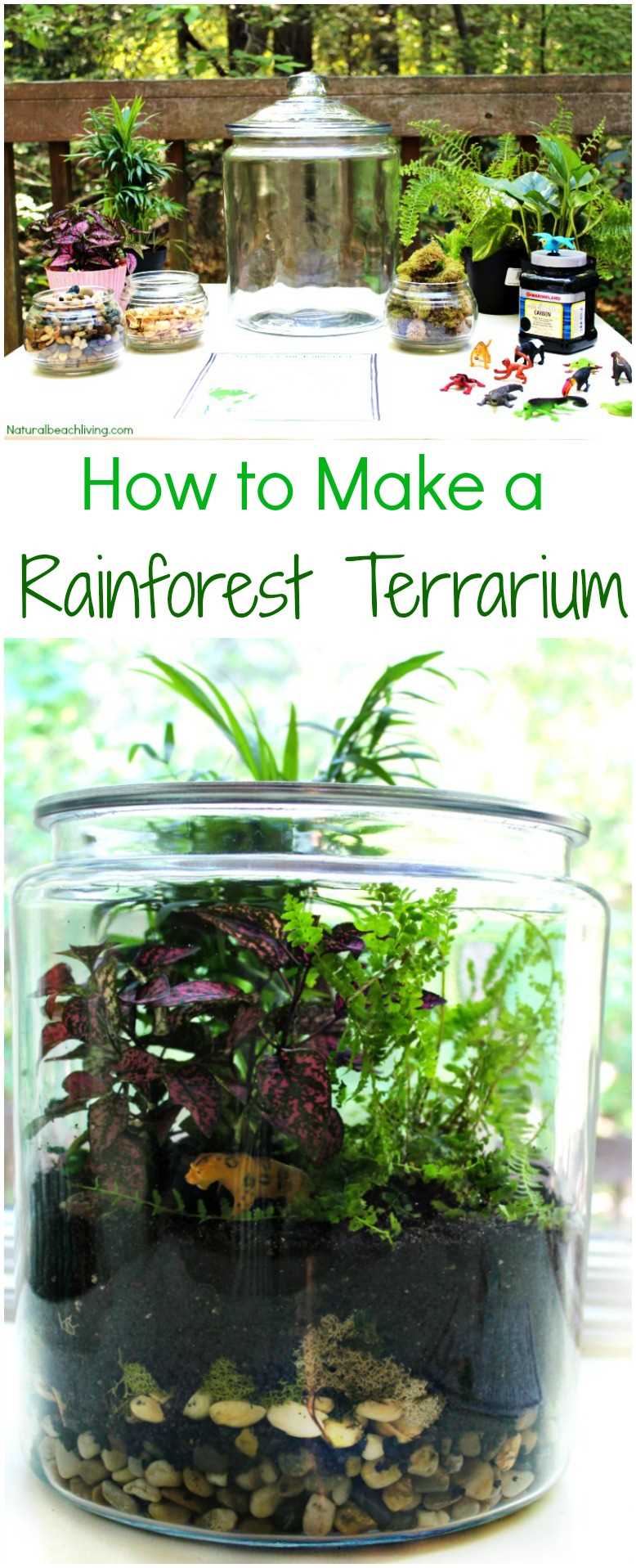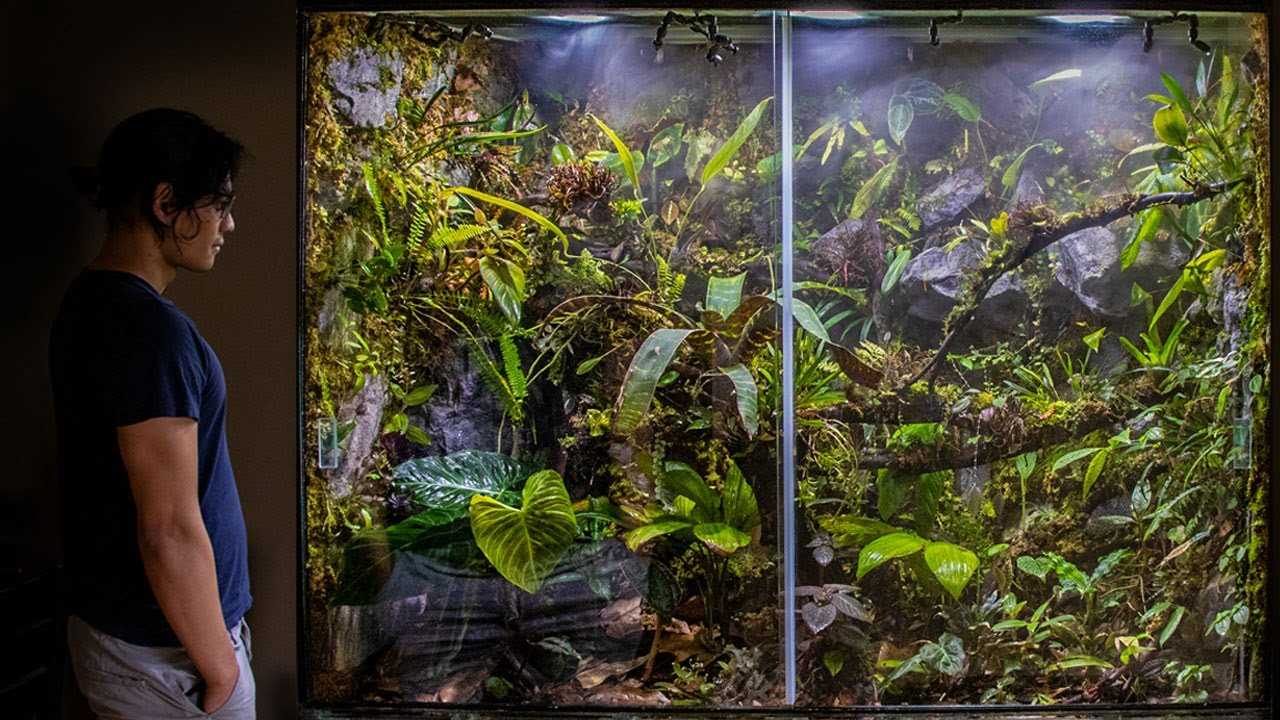Have you ever dreamed of having a piece of the vibrant rainforest right in your own home? With a rainforest terrarium, you can create your own little slice of exotic paradise. These miniature ecosystems are not only visually stunning, but they also provide a unique and captivating way to bring nature indoors.
A rainforest terrarium typically consists of a glass container filled with plants, usually tropical and humidity-loving varieties. The key to creating a successful rainforest terrarium is to replicate the natural environment as closely as possible. This means providing the right amount of light, humidity, and moisture for your plants to thrive.
One of the most eye-catching features of a rainforest terrarium is a miniature waterfall. This not only adds a stunning visual element but also helps to maintain the humidity levels within the terrarium. The sound of trickling water adds a sense of tranquility to your terrarium, making it a perfect addition to any home or office space.
When selecting plants for your rainforest terrarium, choose varieties that thrive in high humidity and low light conditions. Some popular choices include ferns, orchids, mosses, and bromeliads. These plants not only add vibrant pops of color but also create a lush and dense rainforest-like environment.
Benefits of Having a Rainforest Terrarium at Home
- A Rainforest terrarium adds a touch of greenery to your home, creating a natural and vibrant atmosphere.
- These terrariums provide a controlled environment that mimics the natural humidity found in rainforests, making them ideal for moisture-loving plants.
- The humidity in the terrarium also helps to maintain moisture levels, reducing the need for frequent watering.
- Having a rainforest terrarium at home allows you to bring a piece of the exotic rainforest into your living space, without the need for a large garden or outdoor space.
- These terrariums provide a unique and visually appealing way to display a variety of plants, from small ferns to colorful orchids.
- The lush greenery and vibrant colors of the rainforest plants create a calming and relaxing environment, perfect for unwinding after a long day.
- Rainforest terrariums also offer the opportunity to learn about and observe the fascinating growth patterns and behaviors of different plant species.
- By creating a rainforest terrarium, you are contributing to the conservation and preservation of these beautiful and diverse ecosystems, as many of the plants used are native to rainforest regions.
Overall, a rainforest terrarium in your home can bring the beauty and benefits of a rainforest environment into your daily life. It provides a visually stunning display of unique and exotic plants, while also creating a soothing and relaxing atmosphere. Whether you are a plant enthusiast or simply looking to add a touch of green to your home, a rainforest terrarium is a wonderful choice.
What is a Rainforest Terrarium?
A rainforest terrarium is a miniature ecosystem that is designed to mimic the conditions of a rainforest. It typically consists of a glass container, such as a fish tank or a glass jar, filled with soil, rocks, and other materials. The terrarium is then planted with a variety of exotic plants that thrive in the humid conditions of a rainforest.
Rainforest terrariums are popular among plant enthusiasts and hobbyists because they allow you to create a beautiful and self-contained ecosystem within your home. They offer a unique way to bring a piece of nature indoors and can serve as a focal point or a conversation starter.
Benefits of a Rainforest Terrarium

There are several benefits to having a rainforest terrarium in your home. Firstly, it can improve the air quality in your home by acting as a natural air purifier. The plants in the terrarium absorb carbon dioxide and release oxygen, helping to create a healthier living environment.
Additionally, rainforest terrariums can serve as a natural humidifier, especially in dry environments. The plants release moisture through a process called transpiration, which can help to increase the humidity levels in the surrounding area. This can be particularly beneficial during the winter months when the air tends to be dry and can cause respiratory issues.
Furthermore, caring for a rainforest terrarium can be a rewarding and educational experience. It requires regular maintenance, such as watering, pruning, and monitoring humidity levels, which can help to cultivate a sense of responsibility and connection with nature.
Choosing the Right Plants for Your Rainforest Terrarium
Green and Exotic

Moss for Ground Cover

Adding moss to your rainforest terrarium is essential for creating a lush, carpet-like ground cover. Moss not only looks beautiful, but it also helps to retain moisture and create a humid microclimate within the terrarium. Choose different types of moss, such as sphagnum moss or sheet moss, to create depth and variety in your terrarium.
Creating a Waterfall Effect
A waterfall is a beautiful and natural element that can be incorporated into your rainforest terrarium. Choose plants that cascade or have trailing vines to create a waterfall effect within your terrarium. These plants will not only add visual interest but will also provide a sense of movement and flow to your terrarium ecosystem.
Consider Humidity Levels
| Common Rainforest Plants for Terrariums | Light Requirements | Humidity Tolerance |
|---|---|---|
| Ferns | Indirect light | High humidity |
| Bromeliads | Indirect light | High humidity |
| Orchids | Bright, indirect light | High humidity |
| Calathea | Filtered light | High humidity |
These are just a few examples of common rainforest plants that are well-suited for terrariums. However, there are many other options available, so be sure to do your research and choose plants that best fit the specific needs and requirements of your rainforest terrarium.
Native Rainforest Plants for Terrariums
One popular choice for a rainforest terrarium is the exotic fern. Ferns thrive in high humidity and shade, making them ideal for creating a lush and verdant terrarium. The Maidenhair fern, with its delicate fronds and graceful appearance, is a favorite among terrarium enthusiasts.
Another great addition to a rainforest terrarium is the Philodendron plant. With its large, glossy leaves and trailing vines, this plant adds a touch of elegance to any terrarium. Philodendrons are also known for their ability to purify the air, making them a beneficial addition to any indoor space.
Moss is another essential component of a rainforest terrarium. It thrives in high humidity and adds a touch of natural beauty to the terrarium. There are various types of moss to choose from, including cushion moss, sheet moss, and fern moss. Mixing different types of moss can create a visually interesting and diverse terrarium.
Overall, creating a rainforest terrarium with native rainforest plants is a rewarding and beautiful experience. The combination of lush green foliage, cascading vines, and the soothing sound of a miniature waterfall can transport you to a tropical paradise right in your own home. With the right selection of plants, careful attention to humidity and lighting, and regular maintenance, your rainforest terrarium will thrive and provide a stunning display of nature’s beauty.
Factors to Consider When Choosing Plants

When selecting plants for your rainforest terrarium, there are several factors that you should consider to ensure their proper growth and sustainability. These factors will play a crucial role in creating a vibrant and thriving miniature rainforest ecosystem in your home. Let’s take a closer look at some of the key factors:
- Maintenance: Consider the level of maintenance required for the plants you choose. Some plants may require regular pruning or fertilization, while others may be more low-maintenance. Choose plants that align with your ability and willingness to care for them.
By considering these factors when selecting plants for your rainforest terrarium, you can create a thriving and balanced ecosystem that will bring the beauty and tranquility of a rainforest into your home. Remember to research each plant’s specific requirements and ensure that they are compatible with the conditions you can provide in your terrarium.
Setting Up Your Rainforest Terrarium
The first step in setting up your rainforest terrarium is to choose the perfect location for it. Since rainforest plants require a high level of humidity, it is best to place your terrarium in a room that provides consistent warmth and indirect sunlight. Avoid placing it near drafts or heat sources, as this can cause fluctuations in temperature and humidity levels.
2. Creating a Waterfall Feature
One way to enhance the visual appeal of your rainforest terrarium is to incorporate a waterfall feature. This not only adds a beautiful touch but also helps to maintain the desired humidity levels. The waterfall can be created using a small pump and a container of water. The constant flow of water will create a moist environment, ensuring that your rainforest plants thrive.
3. Creating the Ideal Humidity
5. Proper Lighting
While rainforest plants prefer indirect sunlight, they still require adequate lighting to thrive. Place your terrarium near a window that receives bright, filtered light, but avoid direct sunlight as it can scorch the plants. You can also use artificial grow lights to provide the necessary light intensity and duration.
6. Maintaining Your Rainforest Terrarium
By following these steps, you can create a stunning rainforest terrarium that will not only bring a piece of the exotic into your home but also provide a lush and vibrant environment for your plants to thrive. Enjoy the beauty and tranquility that a rainforest terrarium can bring to your living space!

I’m Lena Adams—a product of an unconventional upbringing in the African wilderness. My father, a daring explorer of African wildlife, sparked my fascination with reptiles, a passion that intertwined with the tragic loss of my mother during an expedition, leaving an indelible mark on my life. Driven to understand the creatures that captivated my parents, I embarked on my journey, sharing insights about reptiles, frogs, and lizards on my website. Through my explorations and conservation efforts, I honour my family’s legacy while seeking connections—to the creatures, nature, and the mother whose presence I yearn to understand.
